Taking the winding, zig-zagging train journey to the ‘Old Mountain’ with glimpses of the ancient Inca trail creates unforgettable sights
Landing in Cusco was one of the more interesting landings, as the airport is right in the city.

A quick 10-minute taxi ride to Plaza De Armas via Iglesia De Santo Domingo and we had arrived in the centre of Cusco. The main Plaza is a beautiful space, with churches, museums and the amazing Cathedral. All that was to come later, first was checking in to El Virrey Boutique hotel.

Catherine and I didn’t really know what to expect as the prices in general in Peru are incredibly cheap, we were not disappointed. After being looked after by the staff and offered coco sweets to calm the altitude sickness, we dropped our bags in the room and headed out.
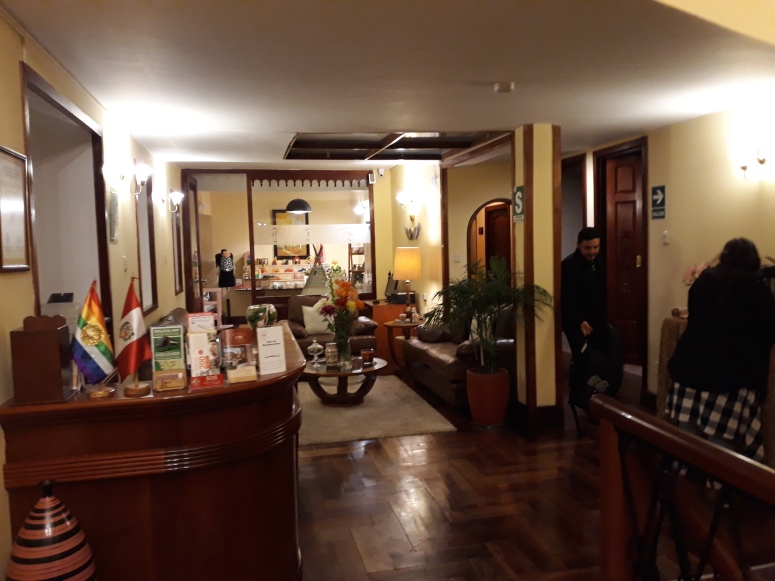
First was the Church of the Society of Jesus. This is a historic Jesuit church in Cusco, the ancient capital of the Inca Empire. It is built on an Inca palace and is one of the best examples of Spanish Baroque architecture in Peru.


Its construction began in 1576 and completed in 1668. It was badly damaged in 1650 and so had to be rebuilt, hence the long building time. If you ever visit, make sure you go up to the top as this allows great views of the plaza.

North of the church is the most dominant building surrounding the square, Cusco Cathedral.

The cathedral is the centre piece of the square and is a very impressive building inside and out. The building was completed in 1654, almost 100 years after construction begun.

Adjacent to the cathedral is the small Iglesia del Triunfo, the first Christian church to be built in Cusco. The cathedral is a designated UNESCO World Heritage Site and has become a major repository of Cusco’s colonial art.
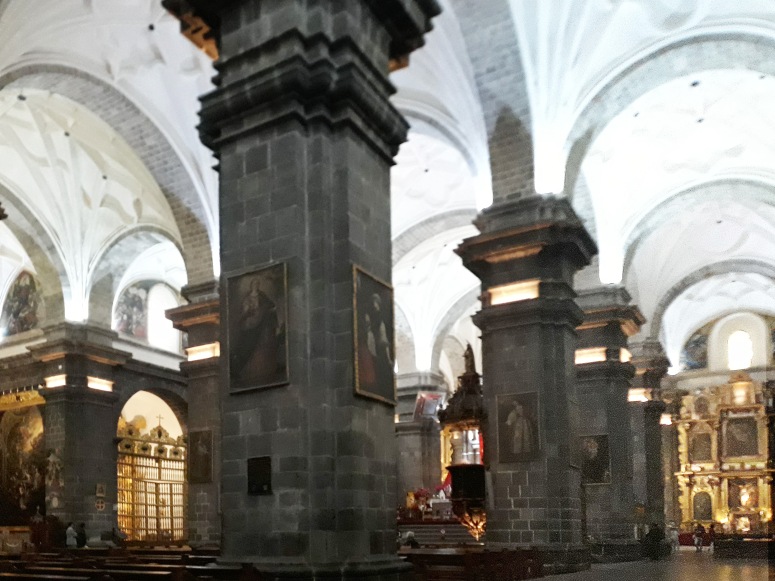
There are many Colonial artefacts held inside. The Altar, Maria Angola Bell, Sacristy and Black Christ are all worth a visit. Included in your ticket for the cathedral is the Iglesia del Triunfo church.

Built in 1538, just three years after the Spanish settled in Cusco, this church is well worth the visit too. After lunch, we caught a taxi to Saqsaywaman. Saqsaywaman is on top of a hill overlooking the main square.

With Llamas galore, Catherine perked up after suffering from altitude sickness. Saqsaywaman is a citadel that has amazing views of Cusco and was first constructed by the Killke culture in 1100. The site was expanded by the Incas from the 13th century onwards, building dry stone walls out of huge stone. The workers carefully cut the boulders to fit them together tightly without mortar.

The site’s altitude is 3,701m and in 1983, Cusco and Saqsaywaman together became a UNESCO site. With a 30-minute walk down to the Plaza De Armas, via the Templo de San Blas, Catherine and I were in need of a good meal, and refreshments.




By the time we had finished our dinner Cusco had got dark. With a late evening service going on in the Minor Basilica de la Merced church up the road we decided to drop in. This 16th century church was packed and was a great way to finish the day.


El Virrey Boutique hotel was just around the corner and we headed up for an early night in preparation for the 7.30am train to Machu Picchu.
Catherine and I had chosen Peru Rail to take us there and like all the companies, we had to make our way to Poroy Station. Poroy is about a 20-minute taxi ride (25 soles) from the colonial centre, then through the local red brick houses to the outskirts of the city.


After agreeing a return trip with the driver, we made our way to the platform.

The station is small and beautiful with lots of seating as train after train leaves for the mountains. After 30 minutes our train was called, ticket stamped and on we boarded. Once seated, it was a slow crawl out of Poroy and into the countryside.

Peru rail was excellent and the carriage we were in had very comfy leather seats, glass roof and even a waiter. About an hour in, the waiter had served us tea and a sandwich while we were zigzagged our way up the mountain range. The train wasn’t fast, and we had time to see the Machu Picchu trail walkers set off on and appreciated the local towns as we passed by.

Stepping off the train at Machu Picchu station was like arriving in a different world. The first thing you will experience is the colours and smells of the market you must walk through to get to the main street.


Coming out of the market we were faced with a river, crashing through the town and our hotel was on the other side. After crossing the river on one of the rickety wooden bridges, we navigated through the small alleys to enter our hotel for the night.
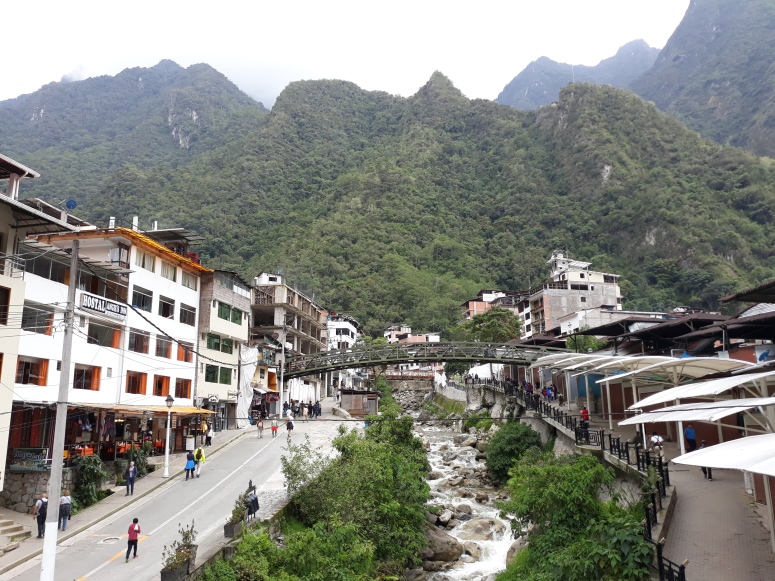
La Pequeña Casita Hotel was right on the riverfront.


After dropping off our bags in our river view room, we went downstairs and found the bus ticketing office next door. A short queue had built when we checked in to the hotel, as the people from the train were heading up that day, but by now the queue had died down to one or two people.

Machu Picchu was very quiet. You can book a ticket up to seven days in advance and they are valid for three days. You need to present your passport to purchase tickets. A round trip costs $24 (as of 2018). You can purchase a single ticket or choose to walk down from Machu Picchu to Aguas Calientes if you feel adventurous.

The lady was very helpful, and we had all the right papers.

By this time, we were both hungry and decided to head to the river for some lunch.
 Toto’s House was picked, and we tucked into a couple of pasta dishes and took in the ferocious river below.
Toto’s House was picked, and we tucked into a couple of pasta dishes and took in the ferocious river below.

Over the other side of the restaurant was the town and the train line going straight down the street.

Machu Picchu village is quite small, but the rest of the day was filled with some interesting sights it had to offer. The train running down the main road is a must see and I was very excited to go and look at the locomotives and the how all the goods get transported. Catherine… not so much!

After entering Plaza Manco Capa on the main square a few streets away, the mood changed. It was filled with sombre people… as we had just stumbled on to a funeral that was coming out of the main hall. With a lot of singing, candle lighting, smoke and of course a coffin, the funeral headed off around the village and up the hill. This was very interesting and sad to see, but a good glimpse into one aspect of Peru life.

After looking in the Cathedral, which was beautiful, and Ministry of Culture next door Catherine and I ventured into a café for a refreshment.


The cafes and restaurants are really good for such a remote village. We headed back to the market for some souvenirs and as it was getting late, headed for the hotel.

After an early breakfast of sausage and eggs cooked by the owner, Catherine and I walked down the road to the bus pickup. Expecting Machu Picchu to be busy we had left very early, 6.15am.

The first bus leaves the town at 5.30am but generally, buses depart when they’re full. They follow the river before crossing and ascending to the mountain. The bus terminates outside of the Sanctuary Lodge hotel, just a few meters from Machu Picchu entrance.

As we turned the corner, to our relief the queue was small, and we quickly jumped into the third van. The van ride isn’t for the faint hearted. If you have a problem with heights and sheer drops mixed with speed and oncoming traffic, keep your eyes closed!
Arriving at the summit, praying that we had all the right paper work, we queued at the entrance gate to get our checked through. As there are no tickets sold at the entrance to Machu Picchu, we had bought ours in advance online at machupicchu.gob.pe. An oversees adult ticket for the Inca City of Machu Picchu set us back 128.00 soles. If you want to climb Montaña or Wayna, they are 142.00 and 152.00 soles respectively. We were visiting in November which is the start of rainy season.
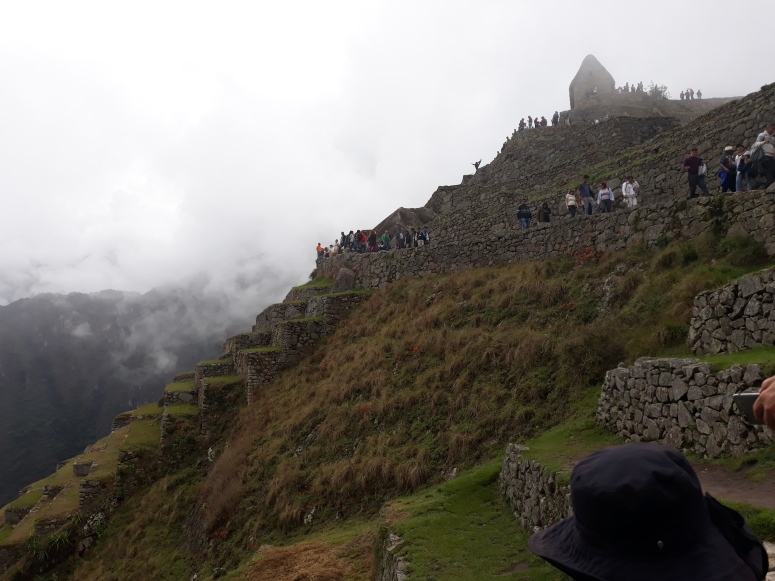
This is a bit risky as the views might be obstructed by fog. This was the case for us and for the first hour, the fog deterred those who had been there for hours staying a little longer. Catherine and I persevered and as the mist rolled in and out like the tide, it slowly revealed different parts of Wayna mountain and the city below.

After about an hour the early morning fog dispersed, and the city and mountain were in full view. Every ticket includes the famous viewpoint of the city (House of the Guardian to the Funerary Rock), so no need to panic. The view is amazing, and you will be up there with the llamas for a while, just taking it in. You can see why they so many people want to visit this great Inca city.

The city is located in the province of Urubamba, 70 miles northeast of the city of Cusco, Machu Picchu was linked to the entire Inca Empire via the Qhapaq Ñan, the famous roads of the Incas. Divided into two areas (the agricultural area consisting of terraces and urban section for administrative purposes), the UNESCO site is 8047 feet above sea level.
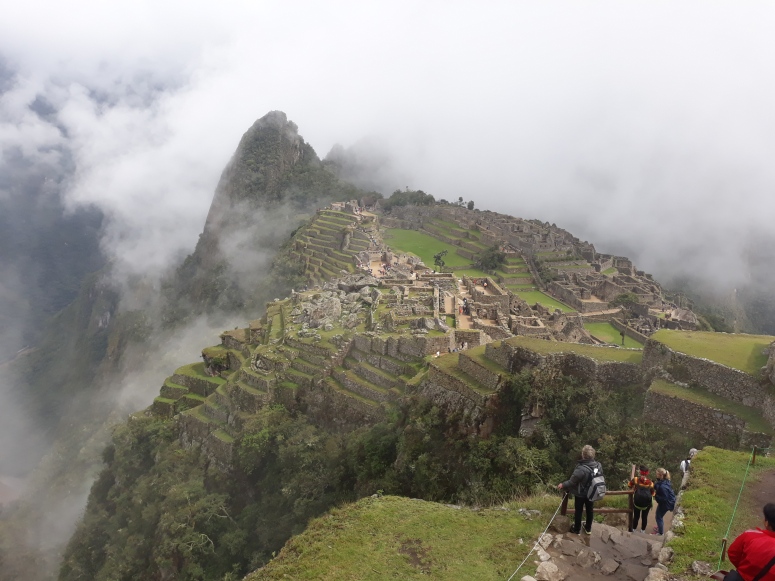
Meaning ‘Old Mountain’, Machu Picchu is an Incan city surrounded by temples, terraces and water channels built on a mountaintop. Built with huge blocks of stone joined together without any mortar, the site was built in the 15th century by the Inca Pachacutec.

Reluctantly leaving the viewpoint and following the main path to the entrance of the city, Catherine and I stumbled upon the Temple of the Sun. A semi-circle construction, the temple housed the royal tombs.

The Solar Observatory is believed to have been where pieces of pottery were placed to equilibrate the position of the sun. Inside the temple, there is also a stone that was an altar where a priest performed rituals and sacrifices, and offered the sacred drink of the Incas, Chicha.

The Central Plaza was next with a good open space to really look around and wonder what it must have been like. The space is surrounded by roofless stone structures and steep terraces, with a great view of Huayna Picchu, this plaza is the green island amid the Inca stone buildings that make up Machu Picchu.

The Central Plaza’s grassy field separates the Sacred Plaza and Intiwatana from the residential areas on the far side of the complex. At the lower end of the Central Plaza is the ‘Prison Group’, a labyrinthine set of cells, passageways, and niches extending both underground and above it.

Off to the north is the Temple of Three Windows, which is located on the Sacred Plaza in the main urban section, the windows are made up of much larger blocks of stone, some weighing over three tons. US academic, explorer and politician Hiram Bingham believed that the three windows represented the place where the Incas originated.
After a few hours of exploring we bumped into the Temple of the Condor.
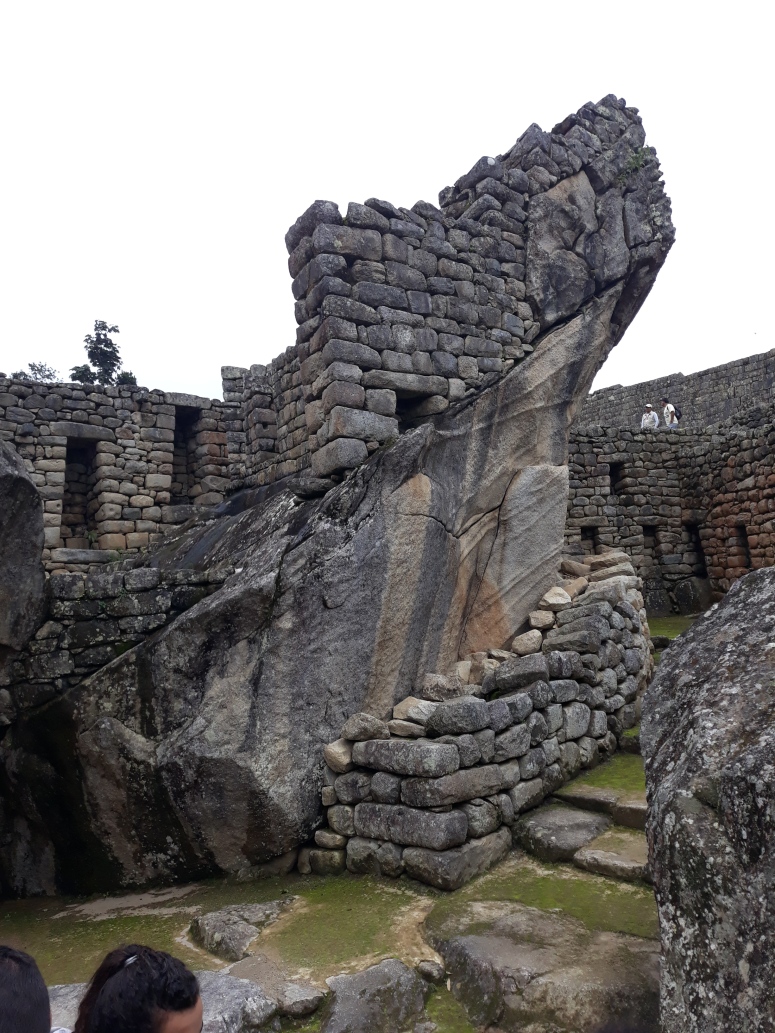
This is a carving of the head of a condor above a rock pile. Behind the bird is a door to a tiny underground cell. Under the temple is a small cave that contained a mummy.
Finally, taking a stroll along the grassy terraces we could sit and enjoy the view. Walking towards the exit, we could admire the scale of these terraces.

There are approximately 700 terraces carved into the mountain and Inca farmers used such terracing throughout the empire to control erosion and increase surface area in their Andean enclaves.

As we exited, I remembered that there was a stamp to press into your passport. With that in place and a bus waiting, we headed back to Machu Picchu village.

As we had got up so early, we had arrived back with a couple of hours to spare before our train took us back to Cusco.



After finding a great pizzeria with good views of the train and river, we walked back to the hotel to collect our bags and catch the train.

The train back was less fancy but still very comfy. It was mostly dark outside and so like most people in the carriage I had a kip.

Walking out of Poroy station, late at night, in the dark with only a taxi drivers’ word to get us back to the hotel, we had little hope. But sure enough, there he was with a bucket load of others clambering for a fare.


A well-earned rest in the El Virrey Boutique and we were up and running again.

A few days later, Catherine and I had to leave Cusco.

It had been a pleasant surprise, and well worth the time spent in the town. We felt we could have stayed there longer, but alas the flight to La Paz was calling.

For more tips on Peru, visit our Peru page here.
Checking out J & C.
